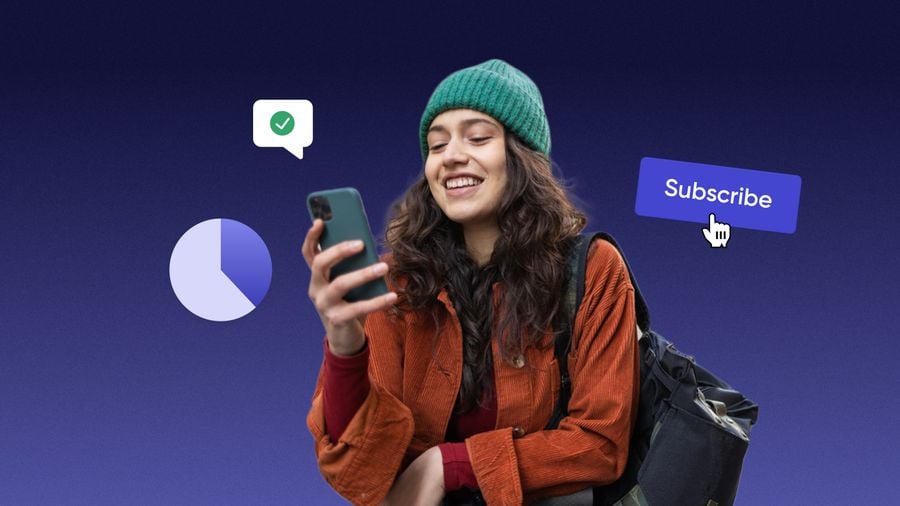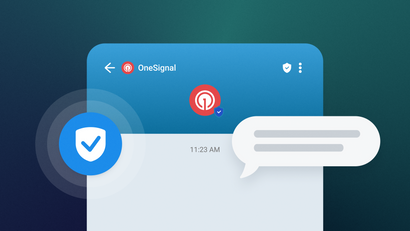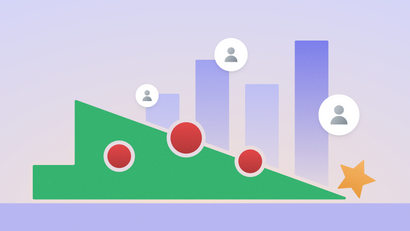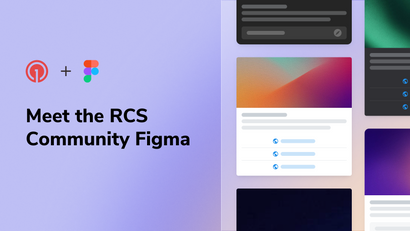It’s not always easy to define measures of success, let alone prioritize which ones will net you the most value. While app installs are an important metric, the real value comes from users regularly interacting with your app in meaningful ways. But here’s the catch: “meaningful” means different things depending on your business.
To increase engagement, it's crucial to understand and optimize the core actions users take within your app.
Below we’ll share how to identify these core actions, optimize them for better engagement, and provide actionable steps to start creating high-impact retention opportunities..
What Are Core Actions in a Mobile App?
Core actions are the key behaviors users perform that directly contribute to your app's value proposition. These could include anything from making a purchase, booking a service, sharing content, or completing a task within your app. The essence of optimizing app engagement lies in enhancing these actions, ensuring they are intuitive and rewarding for all users.
Examples of Core Actions:
- E-commerce app: Adding products to the cart, completing purchases, or saving items to a wishlist.
- Social media app: Posting updates, liking content, or following other users.
- Fitness app: Logging a workout, tracking daily steps, or setting fitness goals.
Focus on the behaviors that align with your app’s purpose and provide value to the user. This is where engagement lives or dies.
How to Identify Your App's Core Actions
To effectively engage users, you need to first understand which actions are most valuable.
Step 1: Analyze User Data
Start by analyzing in-app user behavior data. Look for patterns that indicate how users interact with your app.
For instance, a hypothetical ride-sharing app might discover through data that users who book rides within their first 24 hours of signing up are more likely to become long-term users. Therefore, the core action here would be the first ride booking.
Step 2: Identify Value-Driving Actions
Next, identify the actions that provide the most value to your users and your business. In an e-commerce app, this could be the checkout process. In a fitness app, it could be logging workouts or setting goals.
Understanding what actions are tied to user retention and revenue will help prioritize which core actions need optimizing.
Step 3: Prioritize Based on Frequency and Impact
Once you've identified your key actions, prioritize them based on how frequently users perform these tasks and their impact on overall engagement. Low-frequency, high-impact actions, like a purchase, need to be simplified and incentivized. High-frequency actions, like daily logins or content browsing, should be frictionless and rewarding.
Optimizing Core Actions for Better Engagement
Once you've identified your app's core actions, the next step is to optimize them to ensure they are as seamless and engaging as possible.
Streamline the User Experience
The more complicated or time-consuming an action is, the less likely users will complete it. To increase engagement, you must reduce friction in these core interactions. Think of ways to simplify and automate as much as possible.
Imagine a food delivery app where the core action is placing an order. You could streamline this process by enabling users to reorder their favorite meals with just a single tap. Also, simplifying the payment process with stored card details or offering multiple payment options (PayPal, Google Pay, etc.) can significantly reduce drop-offs during checkout.
Use Gamification to Drive Repeated Actions
Gamification taps into the human desire for rewards, achievements, and competition. By integrating points, badges, or progress trackers, you can make core actions more engaging and encourage repeat behaviors.
For a language learning app, logging daily practice sessions could become more fun with a streak system that rewards consistent users. Every day a user completes a lesson, they earn points or badges, providing a sense of accomplishment. They could also compete with friends or see their progress against other learners on a leaderboard, adding a social component that encourages continued engagement.
Provide Immediate Feedback and Rewards
Immediate gratification is a powerful motivator. Users are more likely to continue performing core actions if they receive instant feedback or rewards, such as push notifications or in-app messages.
Consider a fitness app where logging a workout triggers a congratulatory message and adds points toward a weekly goal. This immediate recognition makes the user feel accomplished and encourages them to keep logging their progress.
Dive into the world of mobile rewards with this guide on creating incentivized mobile challenges.
Onboarding: Setting Up Users for Successful Engagement
Onboarding is where users first learn about your app's core actions, and it can set the tone for long-term engagement. A well-designed onboarding process introduces these actions early and ensures that users understand their value.
Guide Users to Core Actions Early
Introduce users to your app's core actions as soon as possible during onboarding. This could be a tutorial that walks them through how to perform the action or a task that encourages them to complete it.
For a budgeting app, the core action might be logging expenses. During onboarding, the app could guide the user through adding their first transaction, highlighting how quick and easy the process is.
Offer Incentives for Core Actions
Offering users small rewards for completing core actions during their first few sessions can boost early engagement and make them more likely to return.
In a streaming app, you could offer new users a free premium trial if they add three items to their watchlist within their first week of usage.
Looking to build a truly effective onboarding sequence to build early engagement? Check out our Ultimate Guide to User Onboarding Across Channels!
Measuring Success: Key Metrics for Core Action Optimization
After implementing these optimizations, it’s important to track the right metrics to see if engagement is improving. Some key metrics to focus on include:
- Completion Rate: The percentage of users who successfully complete a core action (e.g., how many users who add an item to the cart actually complete the purchase).
- Time to Action: How long it takes users to complete a core action after opening the app (e.g., how long it takes a new user to log their first workout).
- Retention Rate: Track how optimizing core actions affects overall user retention (e.g., do users who complete a tutorial have a higher likelihood of returning to the app within a week?).
These metrics provide valuable insights into the success of your optimization efforts and where there may still be room for improvement.
Quality Retention Starts Here
When your users feel like they are getting value from your app, they will engage more frequently and stay longer. OneSignal gives mobile-focused brands a way to analyze user data and tailor mobile messaging campaigns based on your users’ core actions. And when the time is right, our drag-and-drop Journeys builder brings it all together for a truly omnichannel (and automated!) approach.
Get Started for Free



